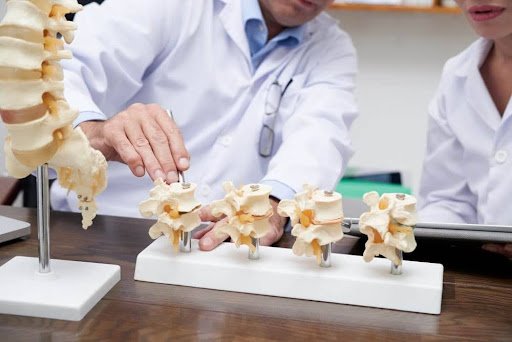Slip Disc Treatment in Pune
A slip disc, also known as a herniated or prolapsed disc, occurs when the soft cushion of tissue between the bones in your spine (vertebrae) pushes out. This spine condition can cause discomfort, numbness, or pain, often radiating down the legs or arms, depending on the location of the herniation. Let’s delve deeper into the causes, symptoms, and available treatments for a slip disc.
Causes of Slip Disc
Your spine is made up of 24 vertebrae separated by discs that act as shock absorbers and allow for flexibility. When the outer ring of these discs weakens or tears, the soft inner material can slip out, pressing on surrounding nerves. Common causes of a slip disc include:
- Age-related degeneration: Discs lose water content and elasticity over time, making them more prone to damage.
- Sudden injury: Lifting heavy objects incorrectly, sudden twisting movements, or trauma can lead to a herniated disc.
- Repetitive strain: Jobs or activities that involve repetitive bending, lifting, or twisting can increase the risk.
Symptoms of Slip Disc
The symptoms of a slip disc vary depending on its location and severity. Common signs include:
- Back or neck pain: Intense pain at the site of the disc herniation.
- Radiating pain: Pain extending down the arms or legs due to nerve compression, often described as sharp or shooting pain.
- Numbness or tingling: Sensations of numbness in areas served by affected nerves.
- Muscle weakness: A slipped disc can weaken the muscles along the affected nerve pathway, leading to difficulty lifting or holding objects.
Slip Disc Treatments
There are a variety of treatment options for a slip disc, ranging from conservative approaches to surgical intervention. The goal is to relieve pain, reduce inflammation, and improve mobility.
- Rest and Activity Modification
- Short-term rest and avoiding movements that exacerbate the pain can help. It’s important, however, to maintain light physical activity to prevent muscle stiffness.
- Avoid sitting for long periods or lifting heavy objects.
- Medications
- Over-the-counter pain relievers like ibuprofen or acetaminophen can help reduce mild to moderate pain.
- Muscle relaxants may be prescribed to relieve muscle spasms associated with the condition.
- Steroid injections: In some cases, corticosteroid injections are used to reduce inflammation and provide temporary relief.
- Physical Therapy
- Stretching and strengthening exercises: A physiotherapist can design a program to stretch tight muscles and strengthen the muscles around the spine, offering long-term pain relief.
- Heat or cold therapy: Applying heat or cold packs can help reduce muscle tension and inflammation.
- Posture correction: Learning proper posture and body mechanics can prevent further disc damage and relieve pressure on the nerves.
- Surgical Treatment Surgery is typically considered only if conservative treatments fail to alleviate symptoms after 6-8 weeks or if the herniation is causing severe neurological issues (such as loss of bladder or bowel control). Surgical options include:
- Discectomy: A procedure to remove the herniated portion of the disc that is pressing on the nerve.
- Laminectomy: Removal of part of the vertebra (lamina) to widen the spinal canal and reduce pressure on the spinal cord or nerves.
- Spinal fusion: This procedure fuses two or more vertebrae together to provide stability, typically done if there is associated spinal instability.
Minimally invasive surgery for a slip disc provides a modern, effective solution for those who need surgical intervention but want to minimize recovery time, pain, and scarring. With advanced techniques like microdiscectomy and endoscopic discectomy, patients can experience relief from debilitating pain and return to their normal activities sooner than ever.
If you’re experiencing back pain, numbness, or muscle weakness, don’t hesitate to seek medical advice for early intervention and better outcomes.















